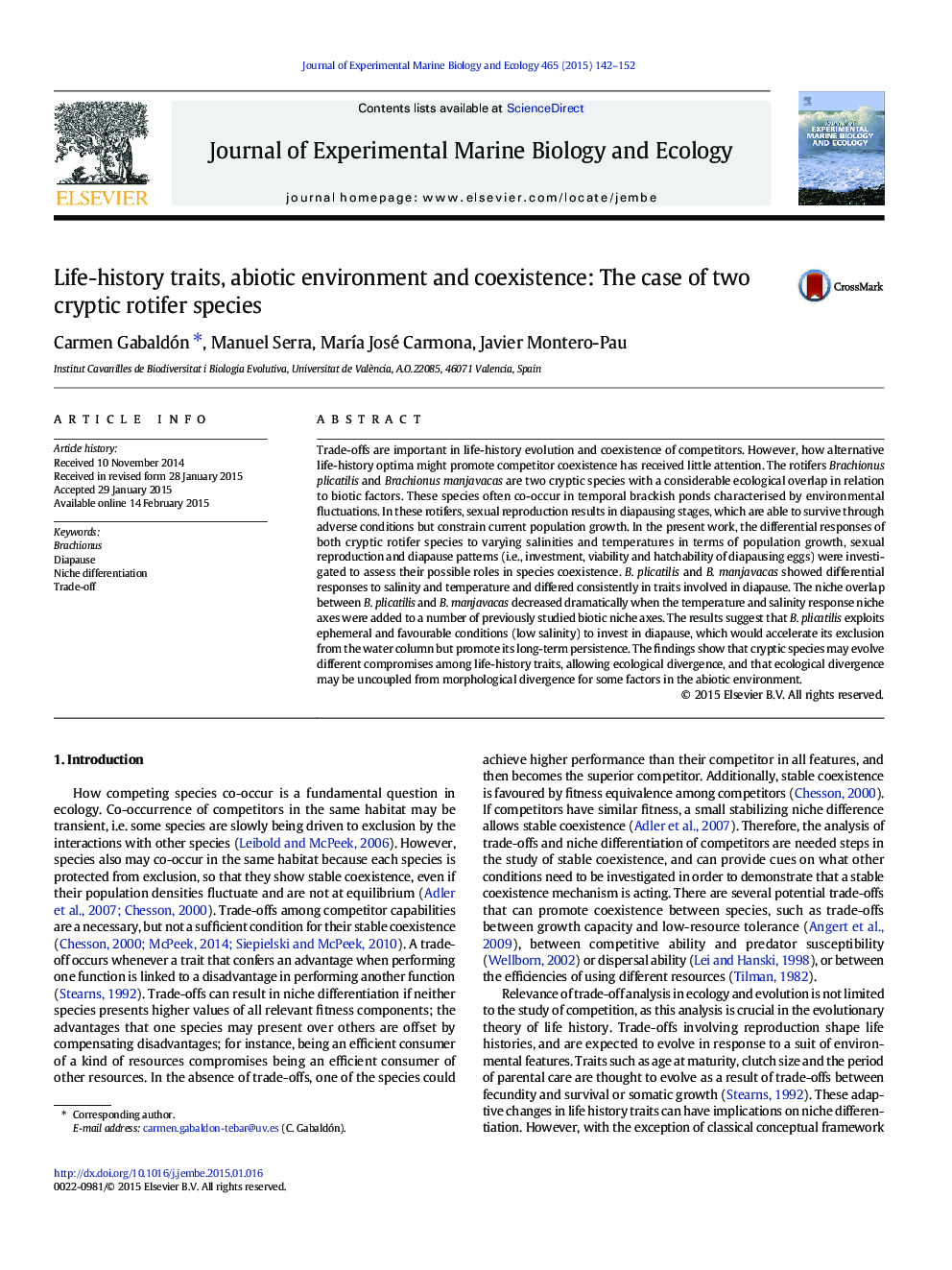| Article ID | Journal | Published Year | Pages | File Type |
|---|---|---|---|---|
| 4395521 | Journal of Experimental Marine Biology and Ecology | 2015 | 11 Pages |
•We examine different responses to salinity and temperature of two cryptic rotifers.•Differences between species were detected for investment in sex and growth.•Different patterns of hatchability and viability of diapausing eggs are also showed.•We suggest the role of the differences in life-history traits regarding diapause on coexistence.
Trade-offs are important in life-history evolution and coexistence of competitors. However, how alternative life-history optima might promote competitor coexistence has received little attention. The rotifers Brachionus plicatilis and Brachionus manjavacas are two cryptic species with a considerable ecological overlap in relation to biotic factors. These species often co-occur in temporal brackish ponds characterised by environmental fluctuations. In these rotifers, sexual reproduction results in diapausing stages, which are able to survive through adverse conditions but constrain current population growth. In the present work, the differential responses of both cryptic rotifer species to varying salinities and temperatures in terms of population growth, sexual reproduction and diapause patterns (i.e., investment, viability and hatchability of diapausing eggs) were investigated to assess their possible roles in species coexistence. B. plicatilis and B. manjavacas showed differential responses to salinity and temperature and differed consistently in traits involved in diapause. The niche overlap between B. plicatilis and B. manjavacas decreased dramatically when the temperature and salinity response niche axes were added to a number of previously studied biotic niche axes. The results suggest that B. plicatilis exploits ephemeral and favourable conditions (low salinity) to invest in diapause, which would accelerate its exclusion from the water column but promote its long-term persistence. The findings show that cryptic species may evolve different compromises among life-history traits, allowing ecological divergence, and that ecological divergence may be uncoupled from morphological divergence for some factors in the abiotic environment.
